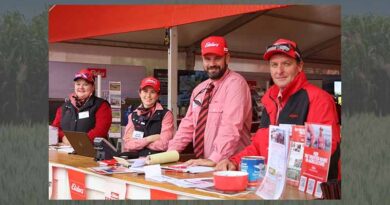Australia: Elders agronomist tackles huge DBM problem
Elders agronomist Greg Teske shares how he reined in some of the ‘highest resistance’ to diamondback moth (DBM) in Australia.
21 September 2023, Australia: Based in Gatton, Queensland, Greg is a long-standing part of the Elders business, after first starting work for Primac over 24 years ago.
His experience in horticulture is extensive, with specialist knowledge across a huge range of vegetables, including potatoes, brassicas, leafy vegetables, fruiting vegetables, cucurbits and alliums.
In 2016, at the Hort Connections event in Brisbane, Greg was approached by grower Matt Crust who enquired about controlling DBM in brassicas. That conversation was the start of a brilliant partnership, and an amazing success story in crop protection.
At the time, Matt was losing an estimated 30 per cent of his brassica crop to the destructive pest. He and another agronomist in the region had gone to significant lengths to manage the problem, but nothing seemed to work. He even had some of the DBM larvae tested at a local university.
“The results showed we had some of the highest resistance to DBM in the country,” Matt said.
“At that point, we were considering drastic measures, just to gain back control.”
In their desperation, the Crusts contemplated investing in expensive machinery, and even shifting their Mount Sylvia-based farm to a new location.
That’s when Matt turned to Elders for help. When Greg came on board, the problem was out of control, and the pressure was on to fix it.
“The Crusts had huge numbers of DBM, and a high level of resistance to a lot of chemical actives, particularly in Group 28,” Greg said.
“I decided to start with a completely different group of chemistry, we didn’t end up using any Group 28, and I told Matt he would just have to trust me and we would have to work together as a team.
“It’s all about the right product, and the right timing, it all has to come together in a package.”
From there, Greg started a targeted spraying program. Visiting Matt’s property at least once a week, he took note of the local temperature, colour and stage of the DBM eggs, and would advise Matt of when and what to spray.
“Matt was great to work with, because at the end of the day, I could say ‘these are the actions I need you to take’ and I could trust that he would get it done,” Greg said.
After just the first year, it was clear that Greg’s strategy was working, and Matt was only losing around 1 per cent of his crop – down from 30.
“I felt a lot of pressure in the first two years working with them, but even with that, we cut their crop losses right back and they started to have a much more saleable product.”
By the time they got to their fourth year of working together, the DBM population had been brought down so far, Greg reverted to much softer forms of chemistry.
“As soon as we could, we cut out all the old, hard chemistry,” Greg said.
“We started using chemicals called BTs (Bacillus thuringiensis), which are not harmful to beneficial insects, so our program was allowing the beneficials to build up again.”
Matt was delighted with the results, explaining that “within a season, we were seeing good results across all lines”.
“While DBM is still around, it is not an issue for our business anymore,” he said.
“We are delighted with these results, and would highly recommend Greg for his services.”
Also Read: Yara India’s knowledge-sharing session with FICCI: Shaping India’s agriculture for 2035
(For Latest Agriculture News & Updates, follow Krishak Jagat on Google News)















